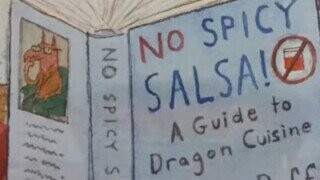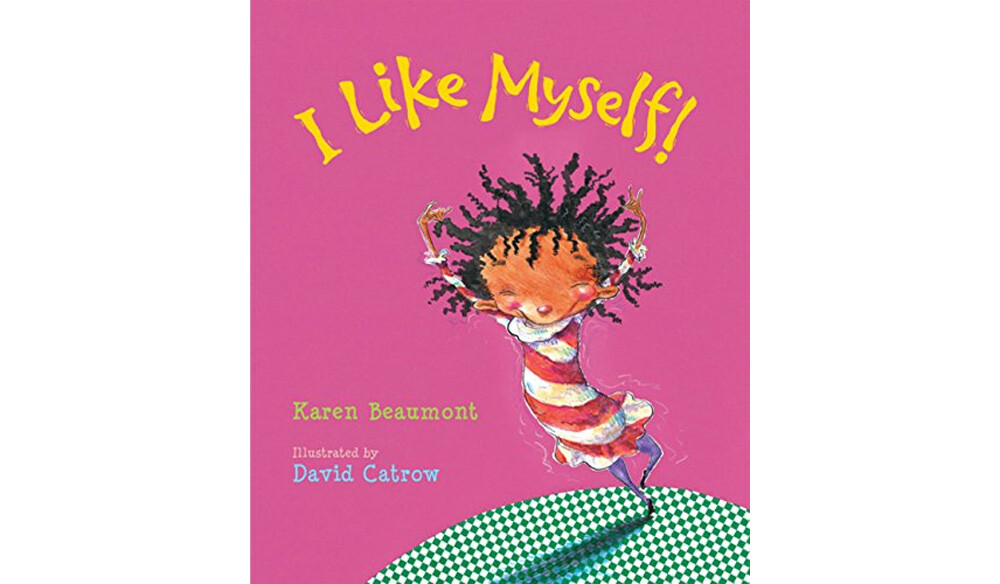5 Children’s Books That Won't Drive Parents Mad

You gotta start reading to your baby before they can really open their eyes, hell, before they’re born, even. So what to read? Sure, everyone knows about Dr. Seuss and The Very Hungry Caterpillar and Goodnight Moon, but did you know some books came out after 1970? Wild, right? Problem is, contemporary kids’ books are a total crapshoot if you don’t know what to look for. Sometimes you find a book that brings Seussian-level joy to you and yours, sometimes you find a book so mind-numbingly dumb you wonder if some illiterate toddler wrote it themselves. I’m here to help you find the former.
The Entire Mo Willems Catalogue
If children’s literature was professional wrestling, Dr. Seuss would be Hulk Hogan: world-shatteringly popular with boomers, a unique icon, and a little tinge of surprise racism there at the end. Mo Willems would be The Rock: unbelievably charming, medium-crossing skillset, and an “absolutely everywhere” presence. Dude’s written so many different book series that even Terry Pratchett or R.L. Stine would probably tell him to take a vacation. Besides all those books, he’s worked in TV on Sesame Street as well as creating the series The Off-Beats and Sheep In The Big City. He’s the kind of prolific that will probably inspire my parents to call me and ask how my still-unfinished-after-a-decade novel is coming when they read this article.
Don't Miss
The series he’s best known for is probably the Geisel Medal Award–winning Elephant and Piggie, about an elephant named Gerald and pig named, uh, Piggie. They’re basically single-panel conversations between the two characters, and they’ve got kind of a Calvin-and-Hobbes-for-two-year-olds vibe. One book chronicles Piggie’s attempts to fly. In another, Gerald has a bird on his head. You know, lessons for life’s daily difficulties. A personal favorite is We Are In A Book, which features Gerald and Piggie having an existential crisis over the fear that their lives may end if you keep turning pages and finish the book. It’s never too early to introduce your child to fourth-wall breaking postmodernism.

Hyperion
For standalone books, I’d recommend Edwina, The Dinosaur Who Didn’t Know She Was Extinct, which is about a dinosaur wandering around small town America baking cookies and not realizing no one else looks like her. It also features an antagonist named Reginald Von Hoobiedoobie, and you have not lived until you’ve coaxed a one-year-old who can barely talk into saying Reginald Von Hoobiedoobie. Seriously, if you don’t have a baby, just go find one somewhere and ask them to say “Reginald Von Hoobiedoobie.” Walk right up to some tyke in a stroller, get real close to their face, and ask if they can say “Reginald Von Hoobiedoobie.” Don’t worry, the parents will be chill about it.
Point is, if you’re a soon-to-be parent and you don’t know who Mo Willems is, you are about to know who Mo Willems is. And if you’re a friend/relative of a soon-to-be parent, you’re welcome, I just did your baby shower/birthday/holiday shopping for you.
That’s Not My Dinosaur By Fiona Watt And Rachel Wells
Babies developing their sense of touch and texture is really important. Babies learning about dinosaurs is also important, so as to prevent them from becoming Young Earth Creationists. That’s Not My Dinosaur does both, with a series of dinosaur illustrations that have different textured material on them.

Usborne
The book has a simple question-and-answer format: “Is this my dinosaur? No, its is too .” It’s clever, easy for even the littlest kids to understand, and leaves room for extra story/information. That extra story stuff is an underrated aspect of the first year or so of parenting. Some baby board books are super minimal (read: flat-out boring), so you have to be able to improvise, lest your brain leak out of your ears as you mumble “this is a blue square, this is a red circle” over and over. I’m not saying come up with season six of The Wire at bedtime, just that it’s good to be able to augment what’s on the page.
For a lot of animal books, you can default to classics like “what does a sheep say? What does a cow say?” and so forth. But since all dinosaur sounds are basically the same (as decreed by Steven Spielberg in 1993), you don’t have that luxury with That’s Not My Dinosaur. What you do have is a bunch of polysyllabic words that come out as adorable gibberish. I’d ask my barel -verbal baby to say “stegosaurus” and “triceratops,” and the results were never not funny. Before you know it, you get your kid speaking full sentences out of nowhere, “the stegosaurus spikes are too squishy,” even if you’re not reading the book.
Part of reading is seeding ideas and imaginative worlds into your kid’s head, and if it’s stuff you came up with off-script, it’s almost like you have a little inside joke together. How rad is that?
Dragons Love Tacos By Adam Rubin
Speaking of rad things, let’s talk about dragons and tacos. Who doesn’t love dragons and tacos? I’ll tell you who does love tacos: dragons, that’s who. Don’t believe me? Obviously you’ve never read Dragons Love Tacos.
Unfortunately for Game of Thrones fans, this book is not about Khaleesi schlepping her kids down to King’s Landing’s hottest new taqueria. Here, a kid is trying to make friends with dragons, who—I dunno if I’ve mentioned—love tacos. So he throws a taco party. There’s a catch, though: Dragons hate spicy salsa. To quote from the text, “Just one drop of spicy salsa makes a dragon snort sparks.” So the kid serves mild salsa. Obviously. Except he doesn’t read the fine print on the jar, which says the mild salsa has flecks of jalapeño pepper. So the dragons, in a fit of uncontrollable pyro-vomit, burn the kid’s house down. It’s hilarious.

Dial Books
This book makes the list because it highlights the specific kind of genius it takes to write kids’ books. First, it welds two disparate concepts together in a fun way. Then, we have the classic hallmarks of a kids’ book: straightforward but silly premise, the soft surrealism of dragons existing as tortilla-obsessed gluttons, and a little kid main character who wants to make friends with dragons. Finally, there’s the spicy salsa catch. As soon as Chekhov's spicy salsa is introduced, you know those dragons are eating some spicy salsa at some point, and it’s not going to end well. It’s Storytelling 101 with a side of mythical creatures and pico de gallo.
Click Clack Moo: Cows That Type By Doreen Cronin
Click Clack Moo is about some cows that learn to type, and it is the most important treatise on workers’ rights since The Communist Manifesto. That’s right, this ostensible tale of bovine literacy is secretly a story of an entire farm striking for basic rights and dignified treatment from their tyrannical master, Farmer Brown.
The cows find Farmer Brown’s old typewriter in the barn and begin typing notes to the overlord. Their requests are perfectly reasonable: the barn is cold at night, and they’d like some electric blankets. Farmer Brown refuses. Then the hens want electric blankets, so the cows double down. Farmer Brown refuses. The cows and hens go on strike. Farmer Brown doubles down, and pretty soon he’s running a farm with no milk and no eggs—an impossible task if ever there was one. By the end, a bargaining deal has been brokered by the ducks (a neutral party), wherein the cows give up their typewriter in exchange for electric blankets. Agricultural harmony is restored.

Simon Spotlight
No matter where you stand on workers’ rights and unions, the book is a lesson in fairness. In a time when workers are leaving jobs in droves because of low wages, unfair practices, and flat-out inhumane treatment, Click Clack Moo reminds us that everyone benefits from an equitable playing field and taking care of each other. You don’t need to be a socialist to understand cold people deserve blankets. Hell, my illiterate three-year-old has never even touched Marx or Chomsky, and even he knows how to share his toys or offer me a blanket when I’m on the couch. It’s never too early to learn that other people have worth. Hey, speaking of worth …
It’s important for kids to have a sense of self-worth. The world is scary, and people can be mean, so having confidence and being proud of your identity are skills your child needs to develop early. This book does that, filled out with wild illustrations that are somehow both whimsical and grotesque, but in a fun way. Page after page, the little girl narrating the story spouts self-affirmations while going about her singularly imaginative day.

HMH Books
I Like Myself also features a Black main character, which brings me to an important topic in children’s lit: representation. My son is biracial (my wife is Black and I’m white), so we deliberately went hunting for books with characters that look like him or at least with representations of both sides of his family. How’d it go? Well, the genre has gotten slightly more progressive than the days of Franklin sitting by himself at Charlie Brown’s Thanksgiving. We had no trouble loading up the shelves with books showing characters from all manner of different backgrounds. But our good luck doesn’t mean there’s not more work to be done. The data-collecting group Diverse BookFinder reports that BIPOC are still significantly underrepresented in picture books. And that’s a problem.
Before you go off on some sort of “it’s just kids’ books, why does it have to be political” rant in the comments, remember that these are the first pieces of media kids interact with. Books can shape perspectives. Dr. Rudine Sims Bishop has a concept I like: mirror or window books. Basically, a mirror book allows children to see themselves, whereas a window book allows children to see other people’s perspectives. It’s important for all children to see themselves represented, and important for them to understand that other people matter.
Fiction, as author George Saunders says, can sometimes be empathy training wheels. Again, the world is scary and people can be mean. It’s never too early to learn empathy. And to bring it back to the ostensible subject of this entry, I’ll sign off like Ru Paul: it’s never too early to learn to like yourself.
Chris Corlew is self-aware enough to know that any children’s book he could potentially write would be garbage. Instead, he writes about werewolves. Find him on Twitter.
Top image: Dial Books
